Picture this: you’re heading to the back of the court to serve. The game is tied at 23. It’s your fifth serve; your team has just won 4 rallies in row, scoring 4 consecutive points. The energy of the game has shifted, you can feel it. The momentum is definitely with your team! You’re getting ready to serve the last couple of points to secure the win for your team.
The other team is in the middle of a mental slump – they’re passing poorly, the hitters are either hitting the ball out or into the net, and the setter is totally frustrated.
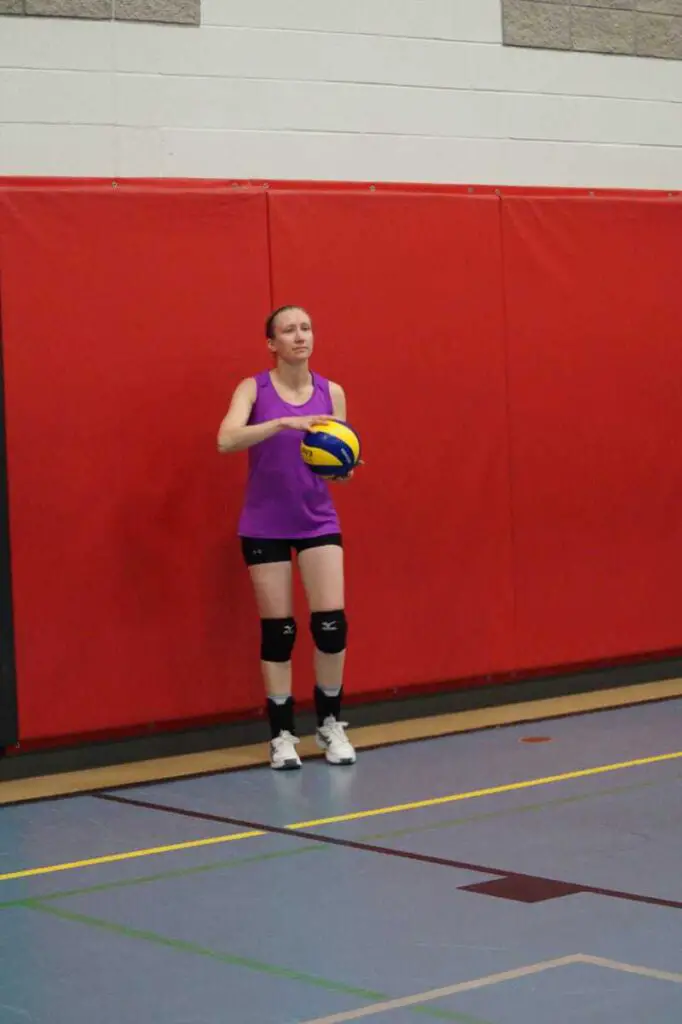
On the other hand, your team is crushing it! Players are gelling, everyone’s talking, and balls that seem undiggable are getting dug up. On top of all that, your last serve was an ace!
TWEEEET! The ref blows the whistle. The other team has just called a time-out. It’s a classic move, and not at all surprising. Quite expected, actually.
Volleyball timeouts are used by a team to stop the game for a short period of time. This could be to share information with teammates, or to change the momentum of the game. They’re also a great opportunity for the players on the court to get a quick drink, and to wipe off any extra sweat.
Time-outs are short, so your team will want to maximize the time that they have to discuss strategy, and to share any vulnerabilities that have been noticed about the opposing team.
Time-outs are usually (though not always) called by a team when they have lost a few points in a row, which will hopefully change the momentum that the other team has built up. And, as in the example above, they can also be called to try to shake a server who is on a streak.
Who can call a timeout in volleyball?
If your team has a coach (such as in club or varsity) the coach decides when to call the time out.
The coach keeps an eye on the team to make sure that they aren’t getting into a slump. The loss of a couple points doesn’t have to be a big deal, but it’s really easy for a couple points to turn into a run of several points, especially if the other team gets on an up-swing of momentum.
If you’re playing in recreational league, your team probably doesn’t have a coach, but the team coaches itself. Your team will still have an assigned floor captain (often it’s the setter), who is the player that is allowed to signal to the ref to call for a timeout. The floor captain may always be the one to decide when to call a time-out, or another player can suggest calling a time-out to the floor captain, who would then signal the ref.
Volleyball timeout rules
Here is an overview of volleyball time-out rules:
- Each team is allowed to call two timeouts during each game (set).
- A timeout lasts 30 seconds.
- A time-out can’t be requested while the ball is in play. When requesting a time-out, it must be done after a rally has ended and before the whistle has been blown to allow for the next serve.

- A timeout is signalled by making a “T” shape using both the hands. One hand is held up vertically, with the fingers straight, and the other hand is held horizontally over top of it.
- When a timeout is called, the six players on the court make their way over to the bench. They don’t necessarily have to step all the way off the court, but they should be in the zone near the bench.
- The 30 seconds start as soon as the ref blows the whistle, so players should make their way to the bench as quickly as possible, so that they can maximize their time-out opportunity.
- Any teammates sitting on the bench can also participate in the timeout huddle, but they are not supposed to walk onto the court during the timeout.
- After the 30 seconds has passed, the referee will blow their whistle, signalling the players back onto the court.
- Teams are often given a few seconds grace period to get back onto the court, but this really does depend on the referee. If a team takes too long, the ref can call a delay warning. If a team gets another delay call in the same match, the other team will be given a point and the serve.
- Once a team has used up both their time-outs for the set, the referee gives them a signal so that they are aware they have no time-outs left. The referee does this by signalling the usual time-out signal (the T-shape with both hands), then holding up two fingers.
- Although this isn’t a rule, make sure that any water or other drinks that have been spilled during a time-out are wiped up before the game starts again. You’d be surprised how many times drinks get spilled during a time-out huddle! Even just a few drops on the gym floor can cause a player to slip during a play, which can cause an injury.
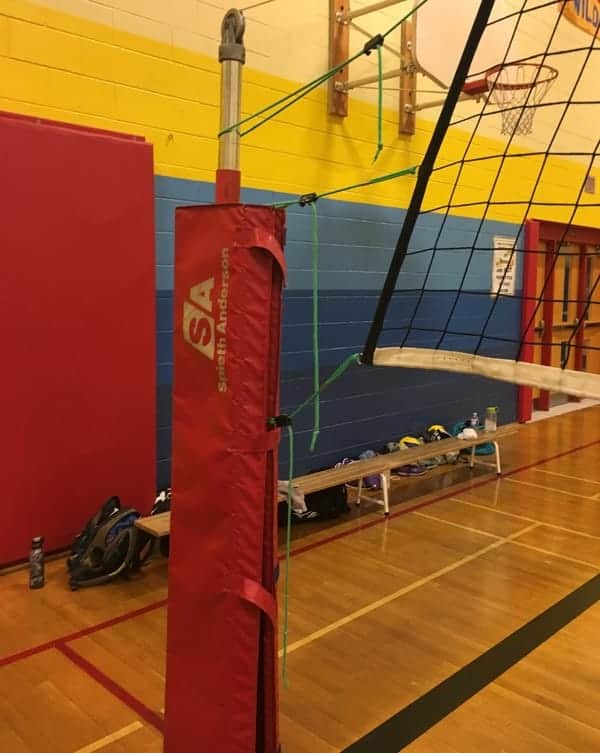
Make sure to check the floor on the court where players were standing, and also just outside the court playing area where players were standing during the time-out. When players are running down a ball, they may run just outside of the playing area, so it’s important to check this area as well.
Special Time-Outs
A referee might call a special time-out if a player has been injured and is bleeding and there is a risk that other players may be exposed to blood. This special time-out gives the team 30 seconds to get a bandage to cover the wound. In this scenario, the time-out would not be assigned to either team (in other words, it wouldn’t count as one of the two allowed time-outs).
If the player hasn’t sufficiently recovered in the first 30-second timeout, the team has three options:
- the injured player needs to be substituted with another player (this can be a legal or an exceptional substitution)
- depending on the position, a libero could come in and replace the injured player
- the team can call a legal timeout, which gives them another 30 seconds (this one would count as one of their two allowed time-outs).
A legal substitution means that each position can only have one backup player assigned to it per game. Once a player has substituted into one position, they can’t substitute into a different position for the rest of that game.
An exceptional substitution means that any player can be substituted into the game, regardless of if they’ve already been substituted into a different position during that game. However, the injured player would then not be allowed to come back into the match.
So, what happens if there isn’t a player that can substitute in for the injured player? Well, the referee can allow a special 3-minute time-out, which will hopefully give the injured player enough time to recover and be able to play again. This can only happen once for a player in a game.
If the player hasn’t sufficiently recovered after the 3-minute special time-out, unfortunately, the team is considered to be incomplete for the match, which means they don’t have enough players to field a team.
Are there Technical Time-outs in volleyball?
Yes, in some matches, but not all. FIVB (the Fédération Internationale de Volleyball) and international volleyball matches have Technical Time-outs, but most volleyball matches do not.
International matches are televised, so Technical Time-outs allow for a planned break in the coverage for additional commercial opportunities. Technical Time-outs also provide a planned opportunity for analysis of the play so far in game.
Technical Time-outs are 60-seconds long, and they are called by the referee at two different times in the game: when the leading team reaches 8 points and 16 points.
There are no Technical Time-outs in a fifth set, just the usual two time-outs per team that can be requested.
When to call a timeout in volleyball
Here are examples of when your team might want to call a time-out.
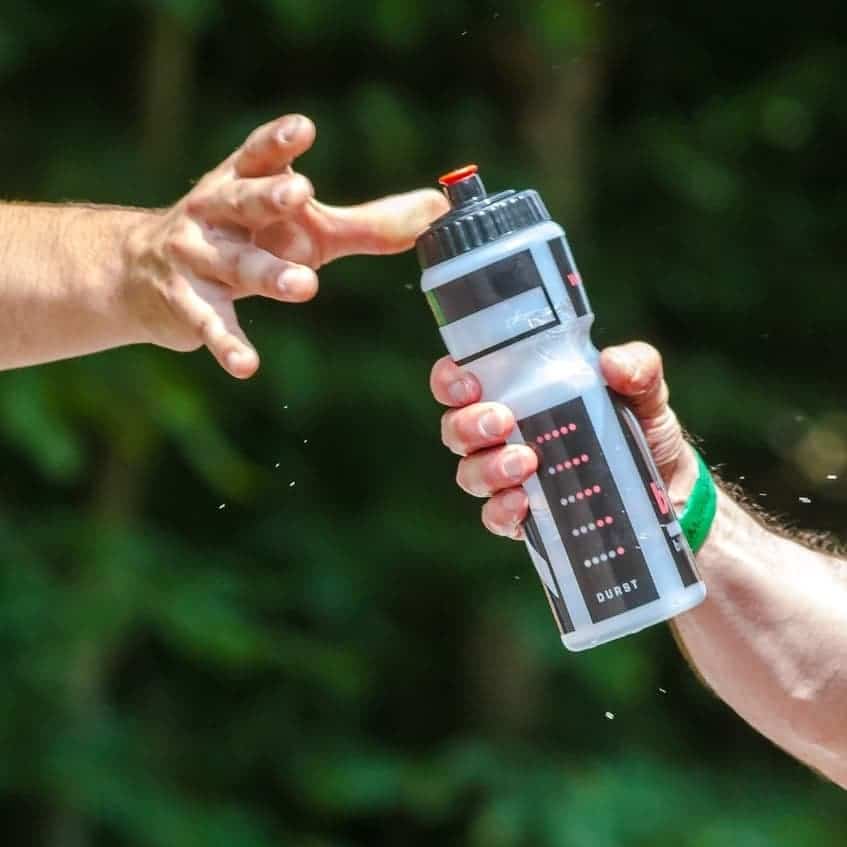
- If the opposing team has just scored a number of points in a row and seems to really be on an “up-streak”, the interruption of a time-out might be enough to break their momentum.
- If your team thinks they might be out of rotation (and it hasn’t been noticed yet!), they might want to call a time-out to get back into the right order.
- If there are some obvious weaknesses in the other team’s offensive or defensive plays, a time-out is a great time to share them with the rest of the team.
- If any adjustments need to be made to YOUR team’s offense plays or defensive positioning, a time-out is a great time to get out the clipboard and make suggestions.
- If there have been some really long rallies, and the team just needs a breather! Getting water and wiping sweat definitely helps, but a time-out in this situation is also about getting yourself and the team refocussed and re-energized.
- If a server on the opposing team is just ON FIRE, and is either scoring points directly with ace serves, or just throwing off the serve receive passers. Sometimes calling a time-out gets in the server’s head, and they end up missing their first serve right after coming back on the court after the time-out has ended.
Volleyball Timeout Strategy
You’ll definitely want to talk about some kind of strategy when calling a timeout in volleyball. Even if your team is currently winning, and the other team called the time-out, you’ll want to discuss what’s been working for your team so far. You can also assume that the other team might be making some strategic changes of their own, so your team will want to stay focussed and keep the intensity up.
What to say in a volleyball timeout when there’s no coach
If you’re playing on a team that has a coach, they will naturally lead the discussion during the time-out. However, if you’re playing in a rec league with no coach, don’t let your time-out become a free-for-all where everyone is trying to talk over each other! You only have 30 seconds, so make them count.
Make sure there’s a reason for calling the timeout: The natural lead would be for whichever player requested calling a time-out to start the discussion. And they should have a better reason than just needing a quick drink of water! Presumably, they’ve noticed something in either the other team’s playing, or they have a suggestion for a change on your own team’s playing, that was worth calling a time-out for.
Facilitate, don’t dominate: There will likely be one or two players who will more naturally take the lead during time-outs. However, that doesn’t mean they should do all the talking! On a rec team without a coach, the opinions of ALL teammates are valid. Be sure to give everyone the opportunity to contribute at some point.
Ask the rest of the team what THEY think should be done: If the time-out was called to try to shift the momentum away from the other team, there may not be an obvious strategic change to make. This would be a good time to ask, “any suggestions on what we can change?” This shows that a change is needed and allows the rest of the team to consider what can be done. Even if no changes are actually made in positioning, hopefully the mental shift of thinking about the momentum change that is needed will help.
Identify what’s working: If one or more players are doing something that is effective, point it out. That way, they are more likely to KEEP doing it!
Don’t be negative: One thing that you DON’T want to say in a time-out is to negatively point out errors that a teammate has been making, especially in front of the rest of the team. All players will make errors at some point in the game, so there’s no need to negatively call attention to mistakes directly. This can affect a player’s self-esteem and their confidence.
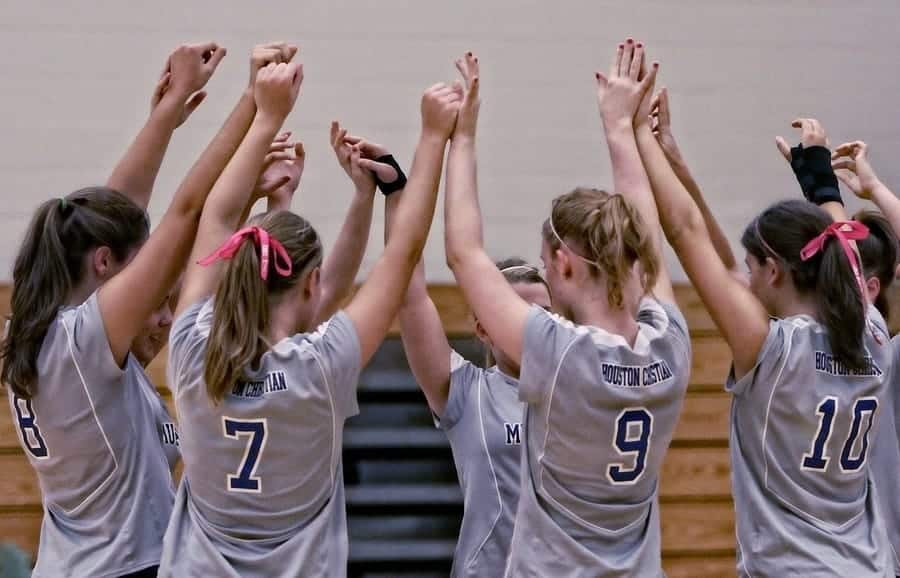
Focus on the GAME, not the person: If improvements need to be made, always focus on the player’s ACTIONS, not their SKILLS. For example, instead of telling someone, “your passing stinks, you need to get the ball to the setter”, consider saying, “try getting to your defensive position faster so that you can get your body BEHIND the ball, which will help you pass the ball on to target”.
Be sensitive: If you have suggestions about actions another player can take, consider talking to them outside of the team huddle. This way you’re not putting them down or potentially embarrassing them in front of the rest of the team. You never know how someone will take criticism, even when it’s meant to be constructive.
Use good judgement: However, keep in mind, this is really challenging to do when it’s not coming from a coach, but rather a fellow teammate. Some players will be receptive to being coached by peers, and others definitely won’t be. Before you start coaching a fellow teammate, make sure that they’re going to be okay with it. Try starting with some small tips, and if your teammate seems receptive, then continue. However, if it’s obvious that he or she doesn’t appreciate peer-coaching, then it’s probably best to just drop it.
Be ready to be coached as well! Always be ready to get some coaching of your own! If a teammate gives YOU some constructive feedback, take the time to consider it before you get defensive. All players have a different perspective on plays and strategy, so being able to discuss ideas and improvements openly (even if you’re the one that could make some improvements!) makes for a stronger team overall.
Try to give others a chance to speak: 30 seconds isn’t a long time, so chances are good that not everyone will get to speak. However, if someone is obviously trying to get their point in, make sure that they have the chance to contribute to the discussion.
Use terminology that everyone will understand: In a rec league, everyone comes from varying levels of experience and from a variety of different teams. Even though time is short in a time-out, it gets even shorter if you have to back track and explain a term that was used on your varsity college team, but no one else knows what you mean.
Keep it succinct and to the point: This isn’t a strategic focus group session! Of course, there will be dozens of things you can discuss and analyze and try out. However, it’s easy to overwhelm and potentially even confuse players if there are too many things brought up during the time-out. Focus on 2-3 things max that your team can work on, or that has been identified as a vulnerability on the other team. Save the in-depth analysis for the post-game commentary!
Cheer! Every time-out should end with a cheer. This builds camaraderie on your team, and gets players pumped up as they head back on the court.
So, now you’re coming back onto the court from the time-out that the other team called. You’re refreshed, your team strategy has been reviewed, and your team is pumped up from their cheer. You walk to the back of the court and bounce the ball, getting ready to serve. Has that brief 30-seconds of being off the court for a time-out gotten into your head, or will you serve another ace ball? Take a deep breath, stay focussed, and serve the ball like you have hundreds of times before. You got this!
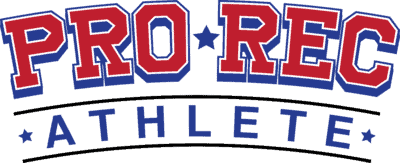
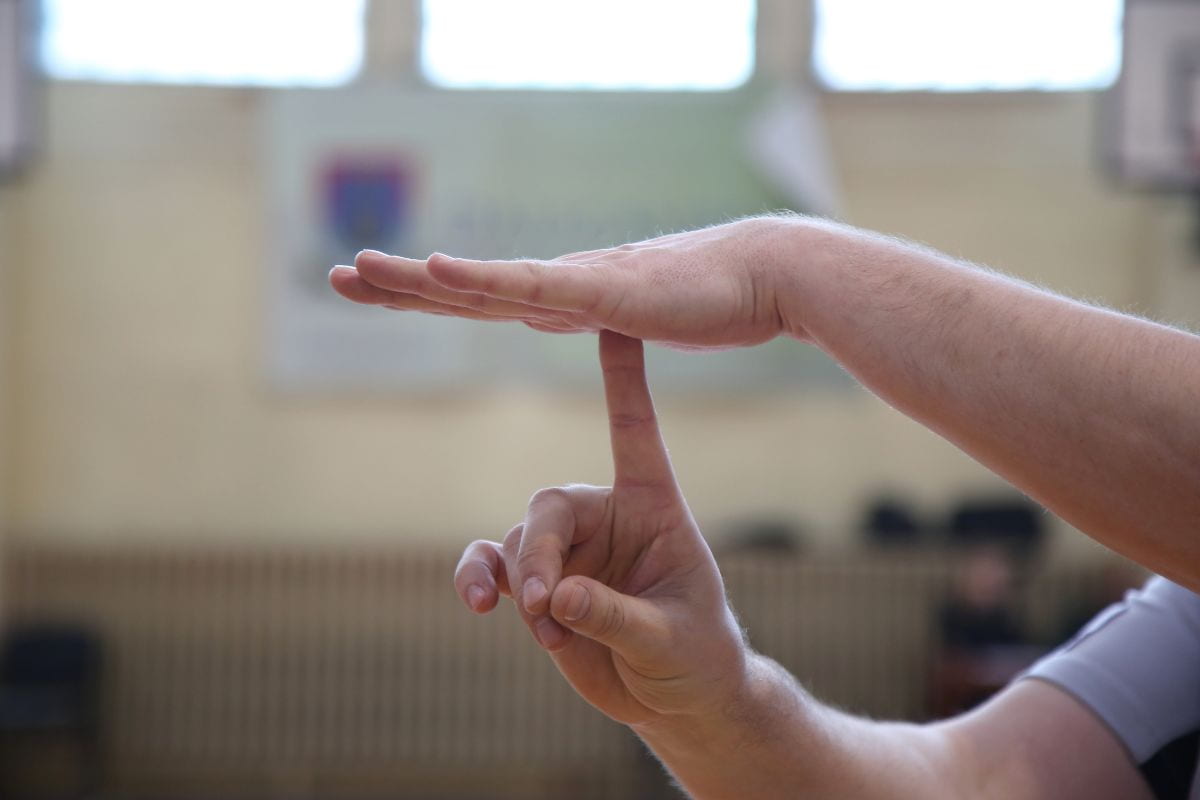
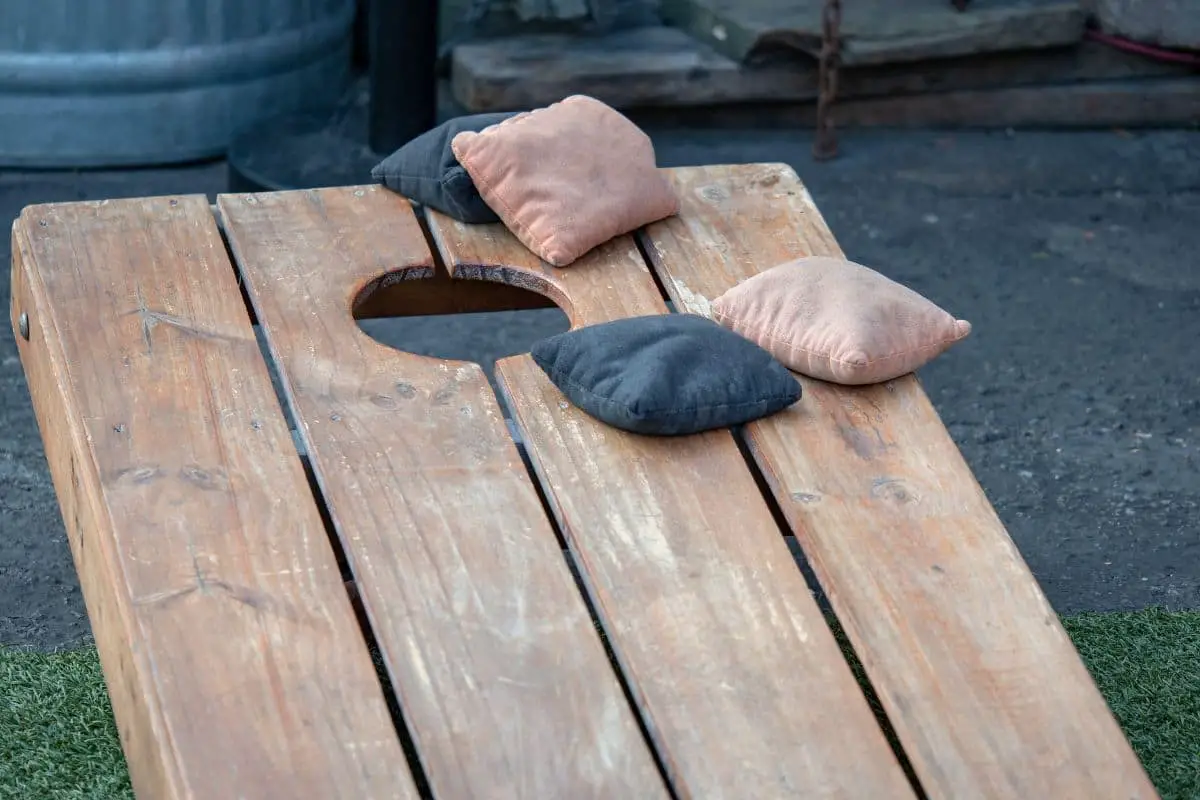
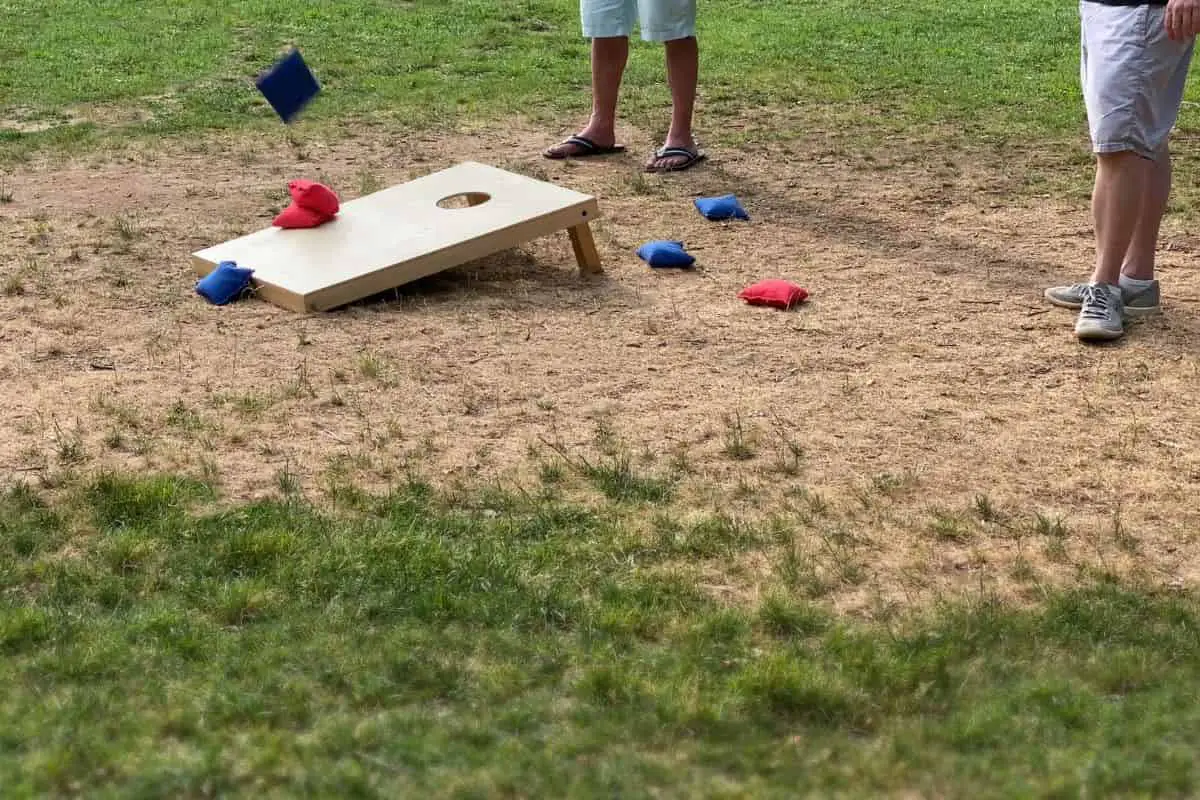
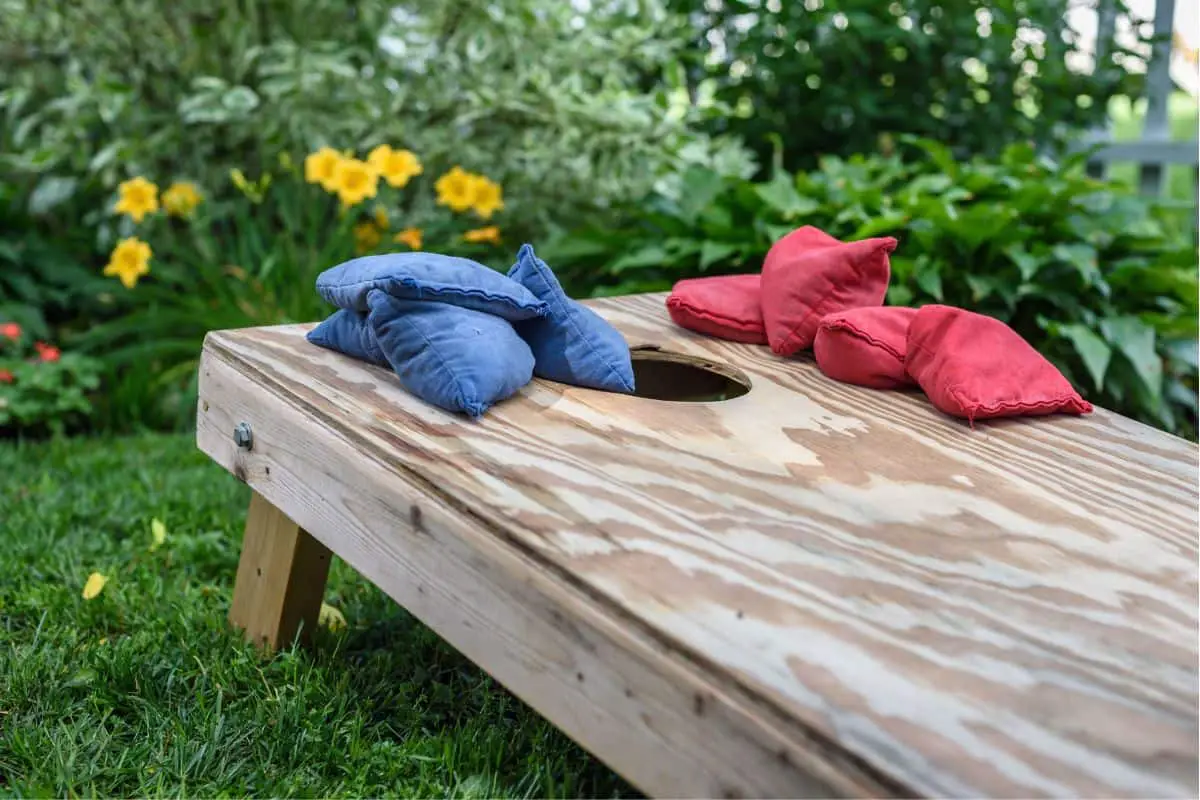
Leave a Reply
You must be logged in to post a comment.